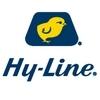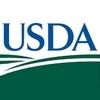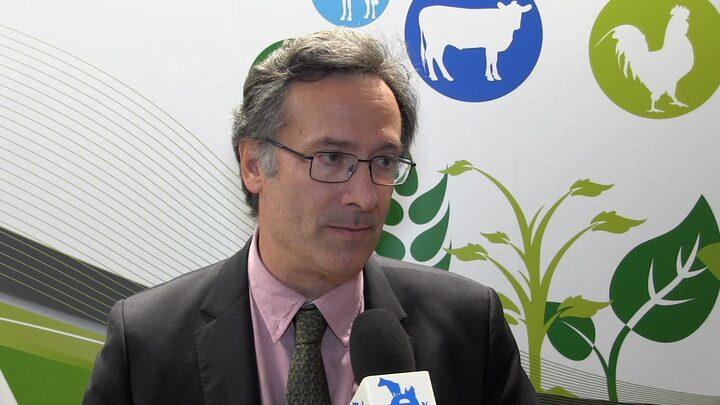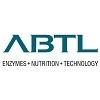Check out what is new in Poultry Industry
Find the best technical articles, forums, and videos on Poultry Industry at Engormix. Enter now and interact with the world's largest agricultural social network.
...
Comments : 0
Recommendations: 0
INTRODUCTION The Food and Agriculture Organization (FAO) forecasts that the human population will increase by 30% by 2050 (FAO, 2019) with corresponding increase in demand for food. Animal protein, the largest component of human food is entirely dependent on livestock production channels as its source. Over 70% of the cost of livestock production is feed, and the second largest component and cost of feed is the crude protein, a segment that has been challenged for its...
Comments : 0
Recommendations: 0
.jpg&w=3840&q=75)

Introducing Afla-V ONE: Safe, Sustainable Aflatoxin Detection for Complete Feeds and Pet Foods
Suggested link
Introduction Modern meat chicken breeding stock have been selected for extremely efficient conversion of feed into protein and rapid growth. As a result, it has become increasingly more difficult to rear pullets and breeders to achieve the healthy chick numbers needed to supply the ever-expanding poultry meat market. There are many factors involved in producing a healthy pullet and breeder chicken. These include; housing, lighting, temperature and air control, health,...
Comments : 0
Recommendations: 2
Method details Salmonella spp. cause fowl typhoid and pullorum diseases in poultry and are responsible for nontyphoidal Salmonella infection in humans. Prevention of Salmonella infection in chicken flocks is an important step in reducing salmonellosis outbreaks in humans. Vaccination with live attenuated vaccine of certain strains such as e.g. S. Enteritidis, S. Typhimurium and S. Gallinarum has been commonly used in the field to prevent the disease, and proven to be useful to...
Comments : 0
Recommendations: 0
INTRODUCTION The quality of egg depends on physical make-up and chemical composition of its constituent namely egg shell, albumen and yolk. Chemical compositions are important in egg product industry as the demand of liquid eggs, frozen eggs, egg powder and yolk oil increases (Song et al., 2002). However; significant percent loss occurs in albumen and yolk chemical composition and pH by long storage periods (Bufano, 2000). Environmental factors such as temperature, humidity, and...
Comments : 0
Recommendations: 1
...
Comments : 0
Recommendations: 0


Feed Granulometry and the Importance of Feed Particle Size in Layers
Suggested link
...
Comments : 0
Recommendations: 0
Featured comment:
A 50,000 population of broiler in a tunnel vent would require about 50 KVA of power per day which includes electricity for the big exhaust/ventilation fans, motors for the pads, water distribution motors and submersible pumps, hundreds of lights inside and perimeter outside the tunnel vent housing, sensors and others. The projected savings in solar power conversion is at least 30%. The set up is grid-tied. The required power at night will be through the grid. All-day power needs would be...
Comments : 20
Recommendations: 2
.mp4&w=3840&q=75)
BEST-PRO is a most formidable alternative protein source along with probiotics. BEST-PRO is a unique combination of highly bioavailable protein with probiotics which helps to optimize protein requirement of birds, improve gut health, growth performance and production parameters....
Comments : 7
Recommendations: 2
Introduction All living organisms depend on the continuous supply of available phosphorus (P) sources for a plethora of metabolic processes. Fertilizer and feed phosphates are obtained to a large extent from rock phosphate. This is a non-renewable resource, and the global distribution of rock phosphate reserves is not uniform. Concurrently, P accumulation in areas with high livestock production density may be harmful to the environment. Hence,...
Comments : 0
Recommendations: 0
Introduction Animals used for food production have been genetically selected for feed intake and muscle development (or milk and egg production) and are therefore divergent from their ancestors. In addition, these animals are reared in conditions that favor fast spread of pathogens. The high uptake of feed and the fast growth make these animals prone to intestinal disorders, what has been neglected in the past because of the use of low doses of...
Comments : 0
Recommendations: 1
.mp4&w=3840&q=75)
Chinese Subtitles: DIGEST FAST is an effective biosurfactant that combines the emulsifying activity of lysophospholipids with the activity of its botanical components. It is a premix of liver function enhancers and lysophospholipids (in powder form).
*Certain information associated with products, their composition and claims may be different depending on the geographical region and may not be applicable in all countries. Liptosa reserves the right to adapt to the requirements and...
Comments : 1
Recommendations: 3
...
Comments : 0
Recommendations: 3
...
Comments : 0
Recommendations: 0


Lost in the Market Uncertainty Caused by the Outbreak
Suggested link
by Sam Shafer
The best part of brunch? Rich, melt-in-your-mouth egg yolks.
Egg yolks are nutrient-dense and the main source of an egg’s flavor. Hens make egg yolks of different sizes, but larger yolks can mean that a hen has a lower feed efficiency—the ability to convert what it eats to egg yield.
Luckily, new genomic sequencing tools may make it possible to devise new breeding strategies to improve egg yolk size without requiring more...
Comments : 0
Recommendations: 0
by Sam Shafer
For broiler chickens, how much space each bird gets around a feeder may be an important factor in weight gain and overall productivity.
According to a new Journal of Applied Poultry Research ® study led by scientists at Mississippi State University and the USDA-ARS Poultry Research Unit, increased feeder spacing can help growing broiler chickens get off to a good start—but these improvements don’t appear to translate to...
Comments : 0
Recommendations: 0
...
Comments : 0
Recommendations: 0
INTRODUCTION Soybean meal (Glycine max) is a widely used ingredient in livestock feed for its excellent protein content. Its production in Mexico is for use in the livestock industry, and is limited by the small scale of domestic soy bean production. Only 3 % of soybean meal demand is met by domestic production, the remaining 97 % coming from imported raw material(1). Despite its excellent protein content, its antinutritional factor content means soybean meal can only be used as...
Comments : 0
Recommendations: 1
.jpg&w=3840&q=75)

Introducing Afla-V ONE: Safe, Sustainable Aflatoxin Detection for Complete Feeds and Pet Foods
Suggested link
1. Introduction The food demand is projected to double over the next 50 years [1]. The increase in the demand of poultry meat over the past decade has been due to the low cost, the positive nutritional profiles, and the suitability in farming [2]. Intensive production is required to achieve the demand, and poultry health should be approached in a multidisciplinary way to ensure animal health [3]. According to OIE, an animal is in a good state of welfare if it is healthy,...
Comments : 0
Recommendations: 0
1. Introduction Salmonella spp. are major food-borne pathogens around the world. The Salmonella genus is composed by two species, S. bongori and S. enterica. Also, the latter is also composed of six subspecies: S. enterica (I), S. salamae (II), S. arizonae (IIIa), S. diarizonae (IIIb), S. houtenae (IV), and S. indica (VI) [1]. In the year 2015, S. enterica was responsible of 94,625 confirmed cases of salmonellosis and 126 deaths in the European Union (EU). Although in the last...
Comments : 0
Recommendations: 0



































